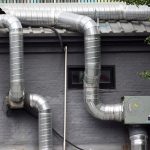Renting apartments in the capital, and efficient investment management. The popularity of investing money in…

Air conditioning in the apartment and in the store – how do they differ?
Air conditioning in the apartment and in the store – how do they differ? The climate has changed, the summer is getting longer and hotter, the walls of buildings heat up so strongly during the day that not only does not feel invigorating cold at night, but even the hot bricks give off the heat accumulated during the day. Many people find it a relief to go to the mall and unattractive sales are the driving force in these cases, but the pleasant coolness of the rooms and shop corridors.
More and more people are wondering and many are choosing to install air conditioning in their home. The owners of service premises or shops have no choice – the lack of air conditioning will scare potential customers away, so their choice is not whether to install air conditioning in the store, but which one to choose.
- https://www.czasopismabranzowe.pl/jak-wybrac-klinike-rehabilitacyjna
- https://www.wjejstylu.com.pl/inwestycje-nad-morzem/
- https://hjo.com.pl/fotowoltaika-swietne-rozwiazanie-dla-swiadomych-ekologicznie/
Domestic air conditioners – which one to choose?
Apartment and house owners have 3 types of air conditioning to choose from:
- Portable air conditioners are convenient because they can be placed in any room with a window. This is a necessary condition, because through the window you need to slide a plastic pipe that carries warm air to the outside. This type of air conditioner is also very easy to use as it does not require additional wall mounting. The disadvantages are relatively low efficiency and noise. It is difficult to sleep with the roaring air conditioner at night and the neighbors can also make claims.
- Split air conditioners are very popular and willingly used in apartments due to their relatively low costs. They consist of two parts, each of them requires assembly. The internal part in the apartment on the wall, and the external part on the facade or roof. Sometimes the outside parts can stand independently on the terrace or balcony. Outside is the main chiller, water condenser and evaporator, inside is the evaporator, filter and blower fan. The outer part should be protected against harsh sun or rain and snowfall. Depending on the design and financial possibilities, indoor air conditioners can be mounted on the wall under the ceiling, on the ceiling, next to the floor (similar to radiators) and ducted (distributed through ventilation ducts to several rooms).
- Multisplit air conditioners are more technologically advanced. One outdoor unit operates several indoor air conditioners. They require additional assembly and are used where installing duct air conditioning would require a major renovation. Additionally, if you want to have air conditioning throughout the house, there is no need to place many air conditioners on several walls of external façades, which can be problematic or disturb the aesthetics of the building. In each room, using multisplit air conditioning, the temperature can be regulated independently of one another.
An additional advantage of home air conditioning is the possibility of not only cooling the room temperature, but also heating it, which is important on some cold summer days, before the heating season begins.
The prices of home air conditioners depend on many factors – primarily energy efficiency and noise level. The cheapest are relatively loud portable air conditioners, the most expensive multisplit air conditioners and air conditioners installed in ventilation ducts.
- wildmoose.pl/pozycjonowanie-stron-gdansk/
- transport24.biz.pl
- skleppodologiczny.com.pl/kategoria-produktu/frezy/frezy-diamentowe/
Air conditioners require regular cleaning or replacement of filters and disinfection of dust (which reduces the quality of work) and pathogens that may persist in them. Contrary to popular belief, air conditioning is not a substitute for airing rooms.
Warehouse and store air conditioning
Air conditioning in small shops
In small shops (also in cafes, service premises), the same air conditioning is used that is installed in homes. In some premises, portable air conditioners are installed, when the owner of the rented premises does not agree to permanent installation or the possibilities are limited by the requirements of the city architect (old, historic buildings).
Air conditioning in supermarkets
A completely different type of air conditioning is used in large stores and malls. They are planned already at the design stage and must take into account parameters such as air flow (or rather the lack of it in such buildings) and the complete inability to ventilate the rooms. Entire supply and exhaust systems are installed during the construction of a shopping center or during the adaptation (renovation) of a warehouse or other space for its needs. Air conditioning in large shop halls requires very advanced technology. Many of them offer simultaneous ventilation, heating and cooling (Freon or chilled water).
The main fans are in fact huge aggregates placed on the roofs of buildings or constituting a separate, separate part of buildings. A serious problem for those who rent out store spaces in large centers are the high costs of not only energy, but also fees for the maintenance of air conditioners and their disinfection and disinfection. Most often, the air temperature is the same in all places, although it may differ slightly in the communication routes from the commercial premises. The difference between the outside and inside air temperature in summer should not be more than 7-8 degrees Celsius. Larger differences mean the risk of temporary loss of health due to a cold.
Zobacz także
-
Renting apartments in the capital, and efficient investment management
-
Frame houses in the forest
Frame houses in the forest. Frame houses, which are extremely fashionable today, can be arranged…
-
Interactive equipment in schools
Interactive equipment in schools. As the world of science moves forward, all areas of our…
-
Recuperation and heat pumps - application
Recuperation and heat pumps - application. Heat pumps are the most developed and the most…
-
Dresses for a wedding and the type of figure
Dresses for a wedding and the type of figure. Choosing a dress for a wedding…
Kategorie
Artykuły
- When should you consider visiting an orthopedist?
- How much money do you need to open a pawnshop?
- How to find a good dentist and how to get to know him?
- Employees from Ukraine
- Selling a house, or what is worth remembering and what increases the attractiveness of the property?
- Horse riding – what should you know about it?
- Insurance glossary – a compendium in a nutshell
- What is the carrier’s OCP?
- Is it worth renting a tow truck?
- Positioning of websites, i.E. What to do to climb the search engine ranking ladder
- Is chiptuning safe?
- How to decorate the interior – a review of wall wallpapers
- Gift jewelry
- Properties for sale – what is worth remembering and what encourages customers to buy?
- Sardinia – heaven on earth
- The history of the bongo
- Own funds and the purchase of an apartment
- A stylish and unusual place for your socket
- Some tips on how to design a good banner ad
- Dental implants – find out more!
- Car rental – customer and business
- Femininity in material, i.e. Underwear
- Pages in wordpress – design
- How to choose a good accounting software
- How to choose legal services
- Interactive equipment in schools
- Programming robots as a christmas present
- Fashionable interior design
- Advantages of a touchless car wash
- Why choose an accounting service
- Good light = healthy eyes. Which lamps to choose for an apartment?
- What is the work of a surveyor?
- At a beautician over sixty: what treatments to choose?
- Are you buying a new apartment? Check the developer first
- How many degrees should you wash children’s clothes?
- How to choose a gaming laptop?
- Tempered glass and a protective film – what to choose?
- Which exterior door to choose
- Products for young children – how to choose good cosmetics?
- Renting apartments in the capital, and efficient investment management
- Photovoltaics will change our planet
- Who is a podiatrist?
- Coffee shops – how to recognize a good coffee shop
- Emporio Armani – premium fashion that conquers the world
- Private investigator – what services does he offer
- Changing the silhouette using the small steps method
- Organize the perfect conference
- Thermoactive clothes – for sports and more
- What is car scrapping?
- Why do we need phone calls?
- Accessories useful when moving
- If you graduate from high school, it’s only it!
- Dresses for a wedding and the type of figure
- Types of spa treatments
- Garage doors on private properties. How to choose and match the garage door?
- Retirement home – what should you consider when choosing it?
- Recuperation and heat pumps – application
- What should you know before the hair transplant procedure?
- Redecoration of the apartment
- Characteristics of wooden structures




